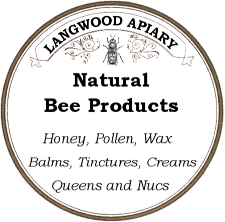
Bee stings were widely used in traditional medicine of Egypt, Babylon, Greece, Persia, and Russia. In this case, beekeepers acted as healers. Charlemagne (VIII-IX centuries) and the first Russian Tsar Ivan the Terrible (XVI century) treated gout with bee stings.
Medical observation of beekeepers exposed to numerous bee stings, allowed to make a hypothesis about the positive role of bee venom in longevity and in the prevention of certain diseases. It is well known that beekeepers do not suffer from rheumatism or gout and their life expectancy is longer than that of other groups of the population.
Official medicine began to use bee venom in the form of bee sting in medical practice from the second half of the 19th century. The pioneer of this trend was the French doctor De Marti (1858). In 1861 Russian professor M.I. Lukomsky published an article “Bee venom as a medicine for treating rheumatism,” in which was presented the method of treating a number of diseases, including common diseases of the joints, neuralgia, and migraine. In 1887 Russian professor I.V. Lubarsky published monograph “The use of bee venom in military medical practice”. In 1888 and 1912 this conclusion was confirmed by the Slovenian doctors F. Terch and R. Terch. Later, multiple Russian researchers after conducting extensive clinical trials, made a great contribution to the development of methods of bee venom treatment, determining indications and contraindications to its use.
In USA B.F. Beck, also called the “father of apitherapy”, played an important role in popularizing bee venom therapy. In 1935 he published his book “Bee Venom Therapy”. His student Charles Mraz continued the popularization of apitoxin therapy in the USA.
In recent decades, medical interest in bee venom has not decreased. At various scientific meetings, conferences and symposiums held since 1895, physicians, veterinarians and beekeepers exchange experience of using bee venom in the treatment of various diseases.
